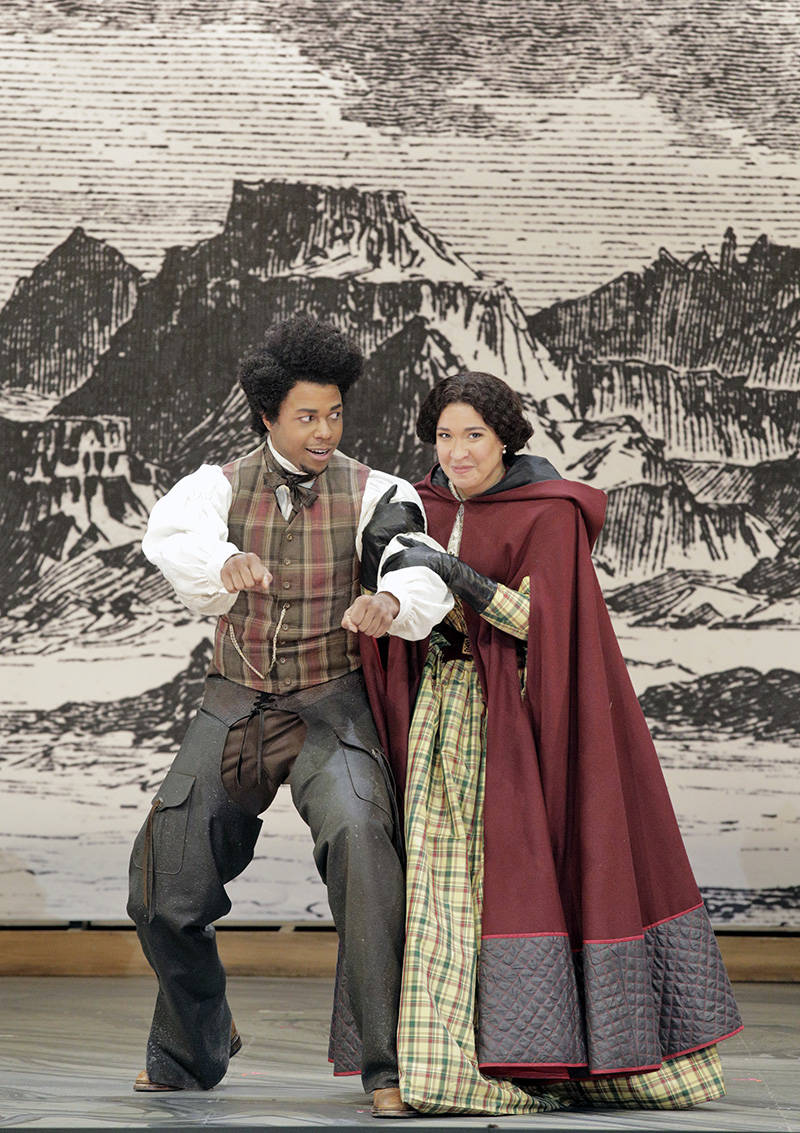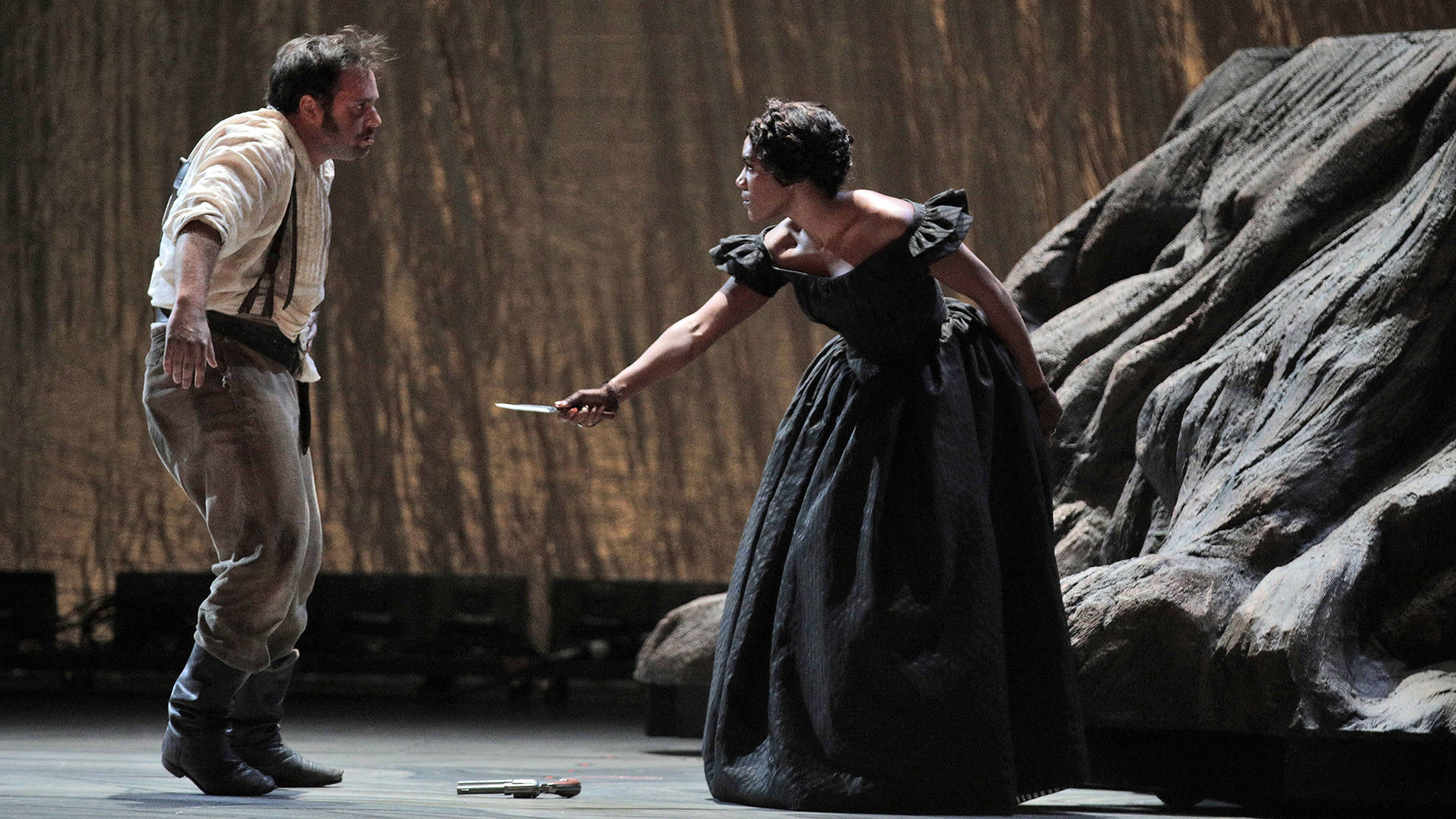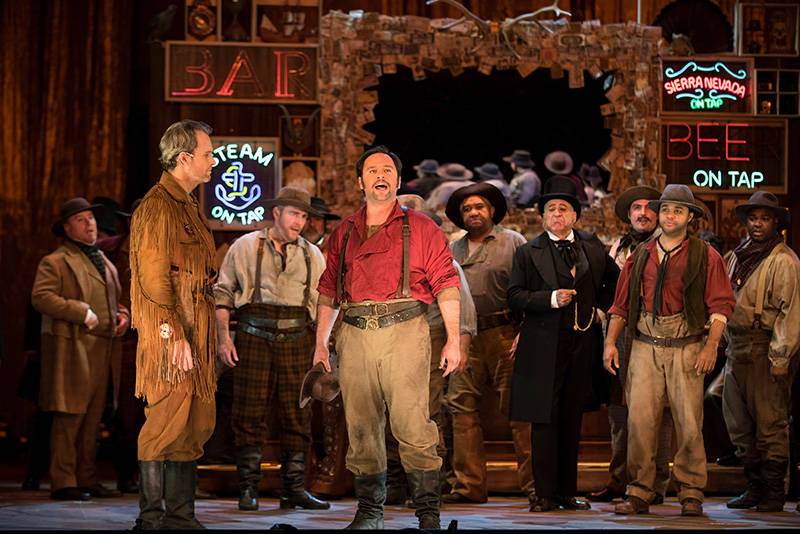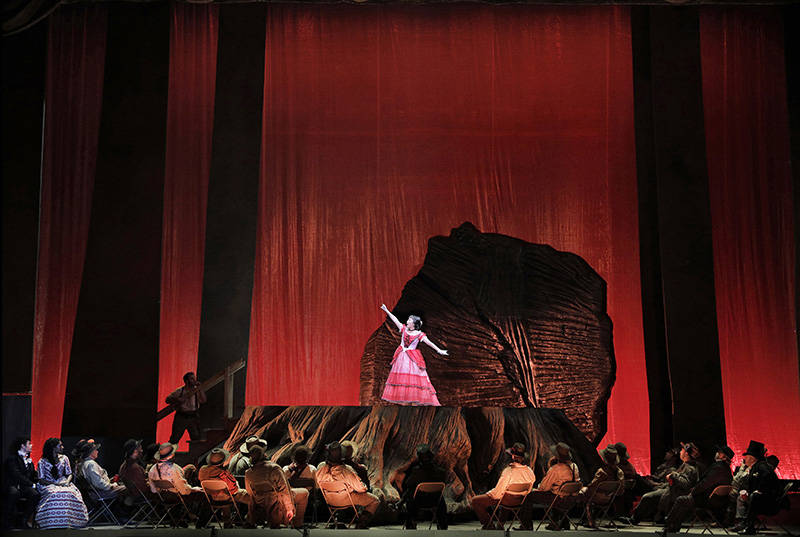School history books and Western movies typically portray the California Gold Rush as a time when white pioneers ventured west to a lawless and near-desolate land, to strike it rich. But accounts from the period portray a much more complicated society — one where different ethnic groups mingled and often clashed; where gender roles slowly began to shift away from Old World conventions.
With San Francisco Opera’s Girls of the Golden West, composer John Adams and librettist-director Peter Sellars give a much more nuanced take on this historical period. The new opera, which had its world premiere last night on Nov. 21 and runs through Dec. 10, centers on the tales of three women from radically different backgrounds — an East Coast dame, a Mexican waitress, and a Chinese sex worker — and one man, an escaped slave.
Adams and Sellars cobbled these stories together from poems, letters, diaries, and literature from the period that represented a cross-section of voices: famous ones like Frederick Douglass, Mark Twain, and Alfonsina Storni as well as lesser-known miners, runaway slaves, Chinese railroad workers, and white settlers.

Dame Shirley, a well-off doctor’s wife who settles in the mining camp Rich Bar, is a witty and insightful narrator who holds together the complicated, overlapping storylines of Girls of the Golden West. Soprano Julia Bullock is humorous and campy as Shirley in the first act, when her rich-lady sensibilities clash with the harsh realities of the camp. But she also brings about some of the most emotionally poignant moments in the second act, when white settlers, restless and angry from their Gold Rush dreams not panning out, begin an onslaught of racist attacks on other residents of the area.
Shirley’s character was based on the real-life physician’s wife Louise Amelia Clappe, whose 1851-52 letters, published as The Shirley Papers, informed much of Sellars’ libretto. As Shirley, Bullock provides many of the historical details that make the opera feel real in lieu of props or complicated set design, and her crystalline voice is one of the most beautiful of the production.





